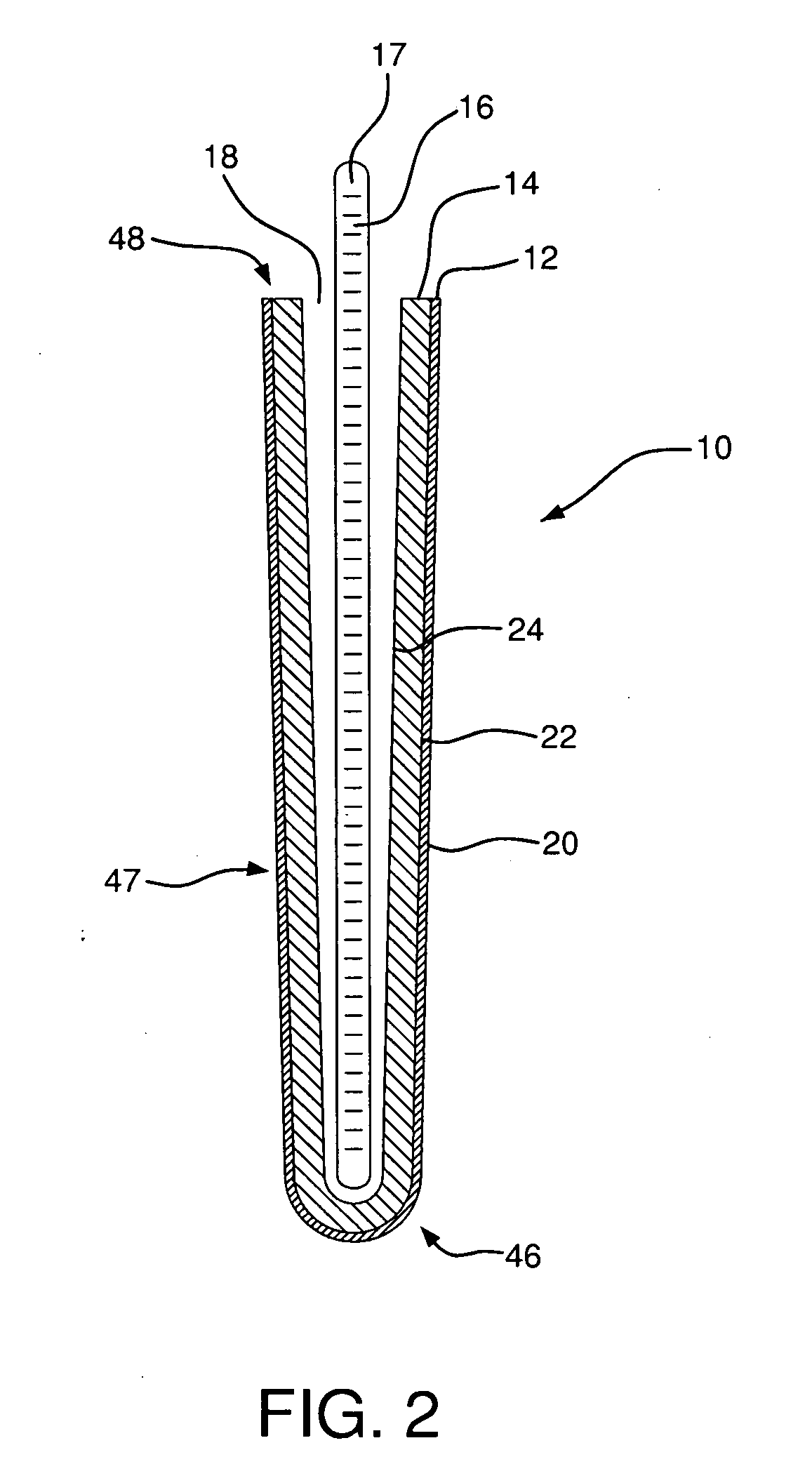Tunnel dressing for use with negative pressure wound therapy system
a technology of negative pressure and tunnel dressing, applied in the field of tunnel dressing, can solve the problems of difficult dressing placement, difficult to heal completely, and significant infection risks, and achieve the effect of sufficient tensile strength
- Summary
- Abstract
- Description
- Claims
- Application Information
AI Technical Summary
Benefits of technology
Problems solved by technology
Method used
Image
Examples
Embodiment Construction
[0029]Referring to the drawings, where like numerals identify like elements, there is shown in FIGS. 1 and 2 a tunnel dressing 10 for treating a tunneling wound with suction according to an embodiment of the invention. The tunnel dressing 10 has a generally elongate shape to provide for insertion of the tunnel dressing 10 into a tunneling wound, such as shown in FIGS. 3A and 3B. The tunnel dressing 10 preferably has a closed distal end 46 and an open proximal end 48, and sides 47 spanning between the ends 46, 48, such that the closed end 46 can be inserted into a tunneling wound with the open end 48 protruding outwardly from the wound. The tunnel dressing 10 can have a generally round or circular cross-section, as shown in FIG. 1, or can have a more oblong or ovalized cross-section, depending on the shape of the tunneling wound into which the tunnel dressing 10 will be inserted. The tunnel dressing 10 can be used, as illustrated for example in FIGS. 7A and 7B, for treating a tunneli...
PUM
 Login to View More
Login to View More Abstract
Description
Claims
Application Information
 Login to View More
Login to View More - R&D
- Intellectual Property
- Life Sciences
- Materials
- Tech Scout
- Unparalleled Data Quality
- Higher Quality Content
- 60% Fewer Hallucinations
Browse by: Latest US Patents, China's latest patents, Technical Efficacy Thesaurus, Application Domain, Technology Topic, Popular Technical Reports.
© 2025 PatSnap. All rights reserved.Legal|Privacy policy|Modern Slavery Act Transparency Statement|Sitemap|About US| Contact US: help@patsnap.com



